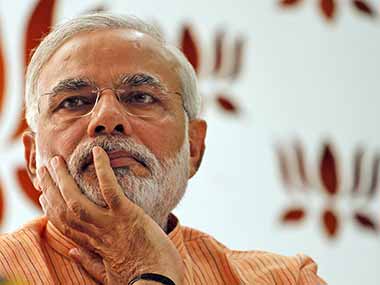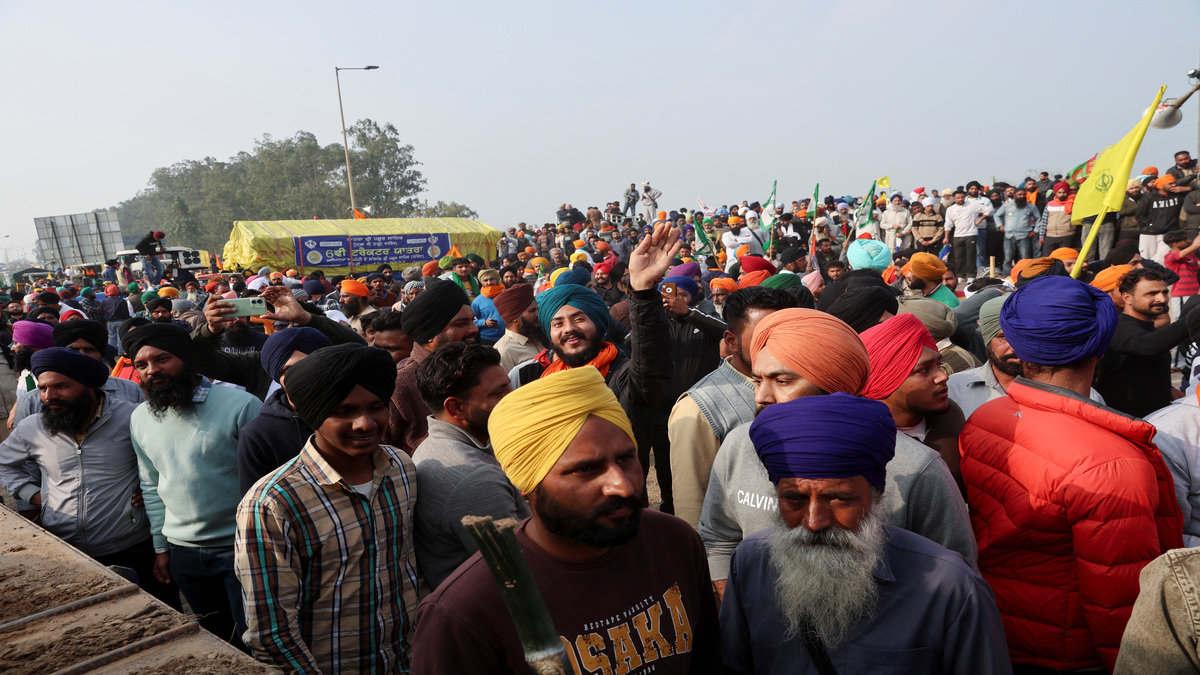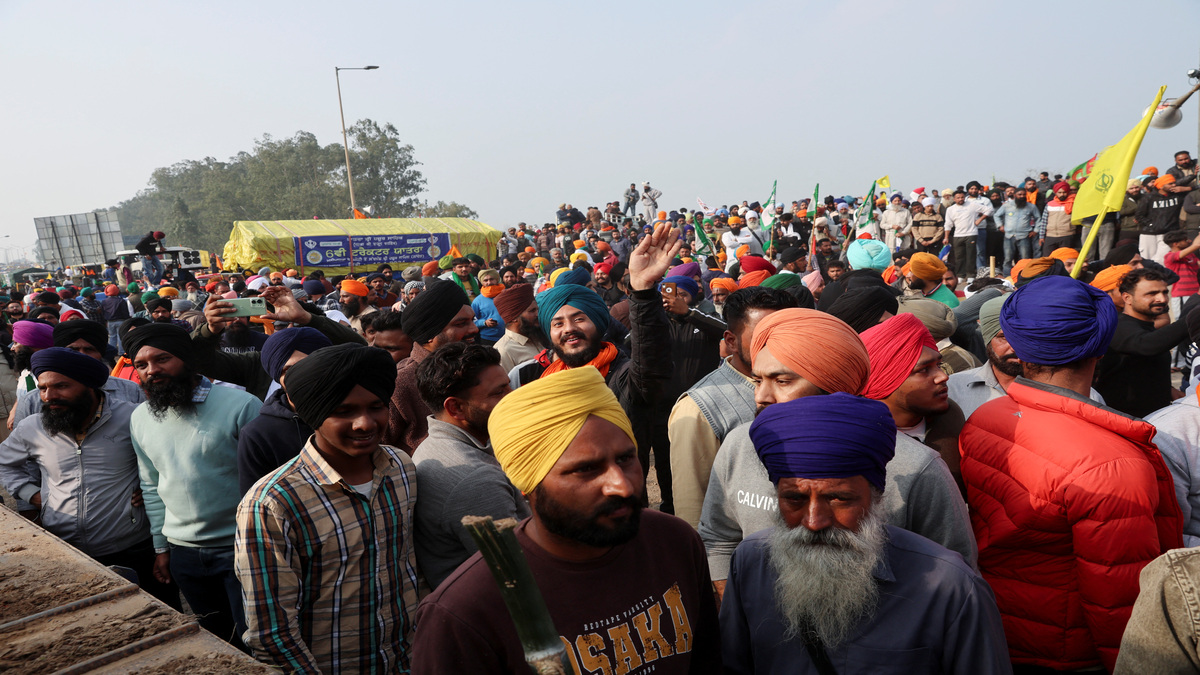Rashtriya Swayamsevak Sangh (RSS), the ideological mentor of Bharatiya Janata Party, has given its last big push at the grass root level to mobilise and convert every cadre and supporter into a potential voter at the polling booth in the last phases of polling in Uttar Pradesh.
The penultimate phase of polling in UP was held on Saturday while the seventh and the last phase will be conducted on 8 March.
The result was apparent on Saturday, when the sixth phase of polling was in progress and Prime Minister Narendra Modi was simultaneously conducting his road show at Varanasi and public rally at Jaunpur. Thousands of people participated in these two events, showing a strong support for the saffron party.
It was a replay of the 2014 road show of Modi in Varanasi. In the first four phases of election in UP, there was no visible ‘Modi wave’ or ‘BJP wave’ in the state, but during the fifth phase, it gradually started picking up, which gradually reached an apogee just before the sixth phase of polling.
Critics may like to call it a result of BJP’s propaganda machinery, but one cannot discount the visible proof in the form of thousands participating in Modi’s rallies and road shows, who may or may not be Modi-bhakts.
“With the sixth polling phase getting over on Saturday, the focus is on the last phase which will be on 8 March. BJP will sweep in the last two phases,” an Uttar Pradesh BJP source said.
In these last two phases, the RSS has given an extra push with a calibrated approach, forgetting any kind of differences with the BJP. Till the second phase of polling in UP, there had been an apparent disconnect between the RSS and the BJP over distribution of tickets in some pockets, which both wouldn’t admit."
“In the initial stage, there had been some disconnect between Sangh and BJP which occurred over ticket distribution in Varanasi, but now there are no differences. There is a strong consultation mechanism. As a result, there is no communication gap. Implementation of decisions is seamless. The influence of Modi will help BJP to win UP election, like it happened during the Lok Sabha election 2014,” an RSS functionary said after much coaxing.
The objective
The RSS functionaries and swayamsevaks (volunteers) who are acting as foot soldiers are tenaciously toiling to mobilise the voters — the supporters of the party at the grass root level and fence-sitters — to polling booths. Under a campaign called ‘Jan Jagran’, the Sangh volunteers are ensuring that people come out of their houses and make the trip to the polling booths to use their franchise.
The objective of the Sangh is to extend support and communicate to the voters to cast vote to a party with nationalist ideology, so that a nationalist government could be formed. General election 2014 was an ideal example, when Sangh’s push was one of the key factors that helped BJP to achieve a landslide victory. “The swayamsevaks of the Sangh and its affiliated bodies are playing the role of a catalyst. They are mobilizing the voters to cast their votes for a nationalist party rather than pursuing them to vote for BJP,” an RSS functionary, currently working on ground in UP, said.
The strategy
The Sangh for its functional ease has divided UP into kshetras, prants, etc. There are six prants or regions — Awadh, Kashi, Paschim (western), Gorakhpur, Brij and Goraksha. Each prant has been further categorised into divisions, districts and mahanagars. A Kshetra Pramukh is in-charge of two prants.
According to a state BJP source, the RSS joint general secretary (Sah Sarkaryavah) Dattatreya Hosabale has played an important role in electoral strategy by setting a core team that further coordinated with teams at prant levels towards implementation of the strategy.
The Sangh that prefers to function in a low-key manner has been into multiple roles in election management in its own way — managing booths, conducting meetings in localities to mobilise voters with a focus on those where Hindu voters are in majority, ground-level surveys to take stock of the actual situation, etc. The RSS coordinator appoints foot soldiers and decides what role one should play.
Besides the RSS swayamsevaks, the members and volunteers of the affiliated bodies like Akhil Bharatiya Vidyarthi Parishad (ABVP), Bharatiya Mazdoor Sangh, Bharatiya Kisan Sangh, Swadeshi Jagran Manch, etc are extending voluntary service to meet the objective.
Apart from its core objective, the volunteers also provide feedback from ground to the party, so that further strategies can be chalked out depending on the situation.
Sangh’s push to get fence-sitters in BJP fold
The RSS, through its last big push, wants to ensure diversion of non-Yadav backward castes and a section of Dalits into BJP’s kitty. The swayamsevaks working in UP believe that non-Yadav backward castes and BSP’s Dalit vote bank will be breached by the saffron brigade.
“This time, the caste line in UP is going to break. The non-Yadav backward caste voters, who suffered in SP regime, will vote for BJP. Similarly, there are many Dalit fence-sitters, who believe that Narendra Modi would bring the desired change in the lives of this marginalised section. They have started seeing him as their new leader,” an RSS functionary, now working with BJP said.
Demonetisation: A non-issue
Demonetisation seems to be a forgotten story now. In fact, the RSS and BJP cadre working on ground opined that the move did not have any negative impact on the common voters, including farmers and labourers.
“There is no negative impact of demonetisation on ground and on the voters. Rather, the poor and the farmers, who hardly have any cash in hand, welcomed the move. Demonetisation didn’t put an end to the supply of cash and there had been some problems for a short period, but things are back on track. So, the BJP will in no way face the wrath of voters in UP due to note ban. The results of BMC polls in Maharashtra and panchayat elections in Odisha were in favour of BJP, attesting to the fact that people have welcomed the move,” said national co-convener of the RSS economic wing, Swadeshi Jagran Manch, Ashwani Mahajan.


)




)
)
)
)
)
)
)
)